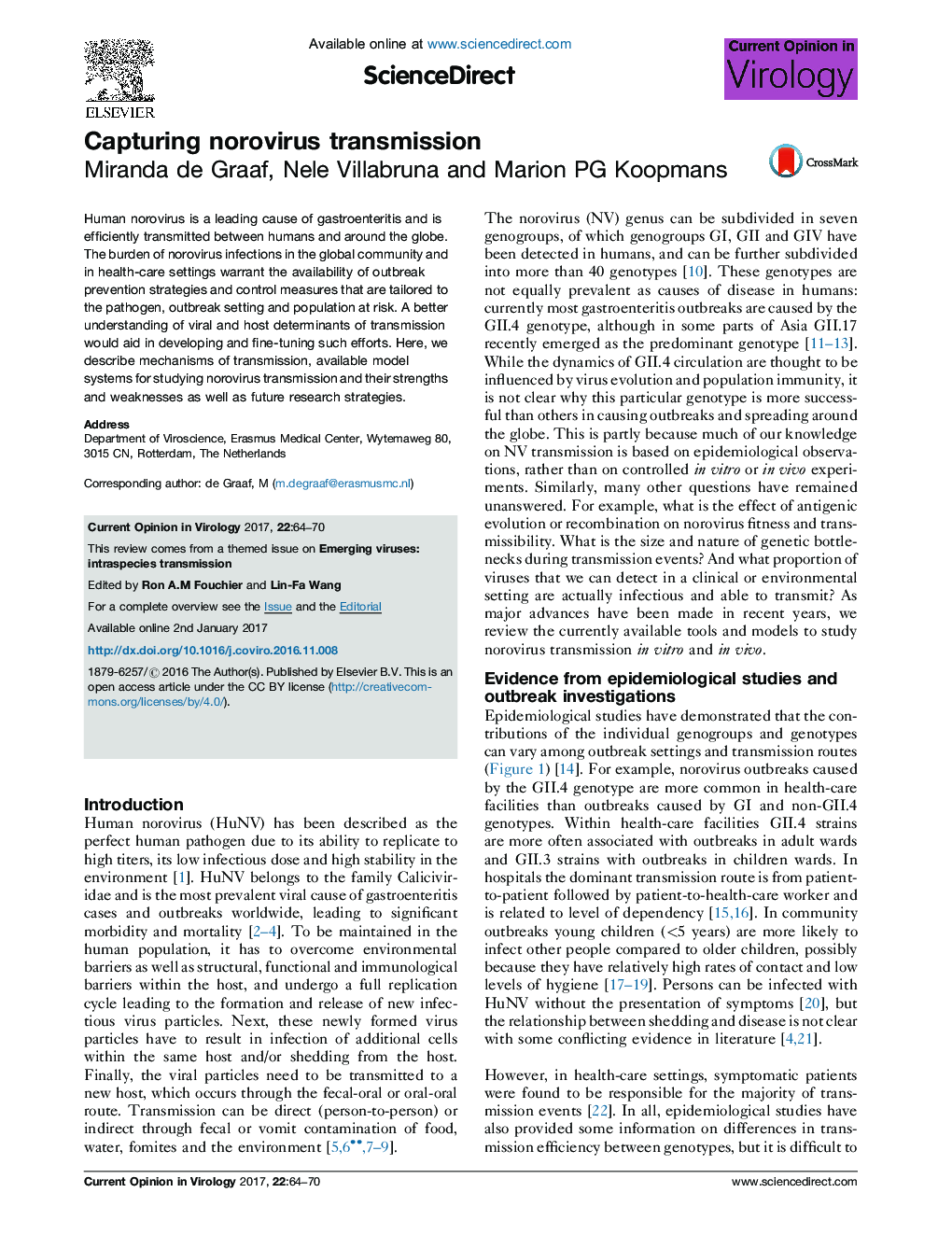| کد مقاله | کد نشریه | سال انتشار | مقاله انگلیسی | نسخه تمام متن |
|---|---|---|---|---|
| 5546238 | 1555904 | 2017 | 7 صفحه PDF | دانلود رایگان |
- Human norovirus productively infects B cells and human enteroid monolayers in vitro.
- The mouse model provides a valuable tool to study norovirus transmission.
- Determinants of transmissibility of noroviruses are poorly characterized.
- New culture and animal models allow addressing some essential knowledge gaps.
Human norovirus is a leading cause of gastroenteritis and is efficiently transmitted between humans and around the globe. The burden of norovirus infections in the global community and in health-care settings warrant the availability of outbreak prevention strategies and control measures that are tailored to the pathogen, outbreak setting and population at risk. A better understanding of viral and host determinants of transmission would aid in developing and fine-tuning such efforts. Here, we describe mechanisms of transmission, available model systems for studying norovirus transmission and their strengths and weaknesses as well as future research strategies.
Journal: Current Opinion in Virology - Volume 22, February 2017, Pages 64-70
